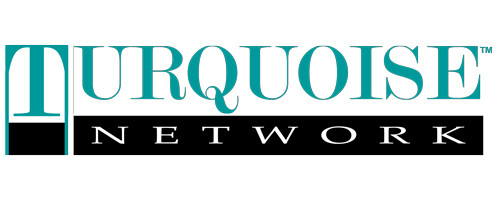
All turquoise used in Turquoise Network's jewelry is GENUINE turquoise.
Turquoise has been treasured for thousands of years in many cultures. Ancient Egyptians, Persians, Native North & South Americans, and Asians were intrigued by the stone’s beauty and beliefs in its positive energy (i.e. healing, love, happiness, etc.).
Commercially, turquoise is one of the most challenging stones for jewelry production because it is so soft and brittle. Great strides have been made, however, in the treatment methods used to make turquoise more durable. Here are the five most common turquoise (and lookalikes) found in today's marketplace:
GENUINE “NATURAL”: Untreated turquoise with the same properties it had when it came out of the ground (soft, brittle, varying color shades, etc.). Very little jewelry in the market actually contains “natural” turquoise (probably less than 1%).
GENUINE “STABILIZED”: Turquoise that has been treated in various ways, such as compression, color-enhancement with dyes, impregnation with epoxy/plastic, heat, and/or other treatment methods. Indeed, MOST turquoise jewelry in the market is stabilized, including jewelry sold by major TV shopping networks, department stores, and jewelry retailers. Even the highest grades of turquoise, such as Sleeping Beauty, are often stabilized for consistent jewelry production, richer color, and better durability.
Turquoise Network's turquoise jewelry is made using GENUINE STABILIZED TURQUOISE that has been treated as described above.
Other notes regarding Genuine Stabilized Turquoise:
1. Turquoise may be color-enhanced as well (e.g. blue, teal, purple, green, red, and other colors). It is still the same material and therefore still considered genuine turquoise by industry standards, and is often referred to as "Mojave", "Composite", and "Compressed" turquoise.
2. Smaller pieces of turquoise may be bonded together to form larger pieces. The individual pieces are all turquoise; therefore the entire stone is still considered genuine turquoise. Sometimes there may appear to be "cracks" in the stone, but in reality it is where two pieces have been joined together (and piece is still structurally sound and stable). The Gemological Institute of America (GIA) also refers to this as "Composite" Turquoise. It is also known as "Compressed" turquoise since the pieces are joined together by high-pressure compression.
3. Turquoise may be infused with copper or bronze, hence the metallic matrix present in many of the colors.
4. Turquoise may be compressed together with different materials, such as Spiny Oyster shell. We call it "Spiny Turquoise".
“RECONSTITUTED”: Absolutely NOT “genuine” turquoise! It contains a very small amount of turquoise that has been ground into a powder and mixed with other materials and chemicals. It is unethical to refer to this type of material as genuine turquoise.
DYED HOWLITE/MAGNESITE/OTHER NATURAL STONES: Not turquoise at all! Natural stones are dyed to resemble turquoise, with matrix and all, but are not turquoise. Unfortunately these materials have become prevalent and falsely marketed as turquoise by unscrupulous dealers.
IMITATION/PLASTIC/RESIN/BLOCK:
Not turquoise at all, but simply a mix of chemicals.
© 2023 Turquoise Network. All Rights Reserved.
